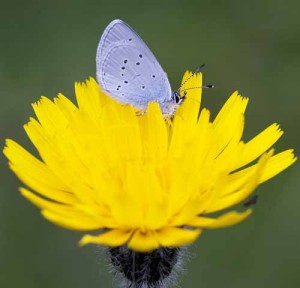Restoring and joining up habitat will prevent threatened butterflies and moths in the Midlands from becoming extinct in the future, a groundbreaking report today revealed.
For the first time, the report by Butterfly Conservation provides concrete evidence that projects aimed at conserving butterflies and moths at a landscape-scale have enabled threatened species to flourish after decades of decline.
A landscape-scale approach works by improving and connecting land for wildlife by the coordinated conservation management of numerous sites for a range of species across a large natural area.
The report, Landscape-scale conservation for butterflies and moths: lessons from the UK, also shows that measures to conserve rare butterflies and moths have helped other threatened species as well as the habitats in which they live.
Butterflies are the most threatened wildlife group; more than three-quarters of Britain’s 57 resident species are declining and over 40% are listed as Priorities for Conservation. More than 80 moth species are also at risk.
Most threatened species are now confined to small patches of habitat that have been left isolated within the modern intensively managed countryside.
For over a decade, Butterfly Conservation has adopted a landscape-scale approach to conserving these areas in order to manage existing habitats more effectively and link them with newly restored habitats.
This combination of targeted management and restoration has allowed many species to flourish in each of the 12 landscapes covered in the report.
Examples include the Small Blue in Warwickshire which has increased from a low of three to eight colonies in just three years.
The Back to Orange project in Worcestershire and Shropshire’s Wyre Forest, led by Butterfly Conservation and the Forestry Commission and delivered in partnership with Natural England, has successfully increased populations of the Pearl-bordered Fritillary butterfly through carefully targeted management.
Dr Jenny Joy, Butterfly Conservation’s Senior Regional Officer in the West Midlands said: “We are very pleased that work in Wyre Forest has now received national recognition. Our achievements have demonstrated clearly that with determination, enthusiasm and the involvement of key partners there is a way back for rare butterflies.
“Other butterflies and many other insects, plants and birds have also benefitted from the work undertaken and it is great at a time when we still read of declining and threatened wildlife that we can reflect on a project that has been so successful”.
The report lends weight to the recent Government paper by ecologist Professor Sir John Lawton Making Space for Nature which states that we must make habitats far bigger, better managed and more connected if species are to survive in the future.
Sir John said: “The Butterfly Conservation report shows what can be achieved through a highly focused species-led approach.
“Very simply ‘more, bigger, better and joined’ works, and needs to be rolled out far more widely. Recreating, restoring and joining up habitats benefits not just butterflies and moths, but a host of other creatures with which they share their habitat.”
Dr Sam Ellis, Butterfly Conservation Head of Regions, said: “Our report shows that landscape-scale conservation works for our most threatened species. We now need to raise the funds to implement landscape projects across the UK to halt the dramatic decline of butterflies and moths.”
Butterfly Conservation is calling on government to provide more funding for landscape-scale initiatives and targeted species conservation in order to reverse the decline in biodiversity and achieve the government’s 2020 targets on biodiversity.
Key lessons from landscape-scale conservation
The report lists a series of important lessons that need to be learnt to allow this approach to be effective in reversing the decline of other wildlife groups.
:: Careful targeting of management, both across the site network and within each site, is essential to maximise the chances of success.
:: Extinction of species on small, isolated sites need not be inevitable if they are properly managed. Landscape-scale conservation can be applied across quite small areas.
:: Skilled project officers are essential, providing the link between landowners and managers, partner organisations, funders, contractors and volunteers.
:: Landscape-scale projects must be underpinned by sound ecological research and high quality monitoring to assess their effectiveness.
:: Projects focused on a single butterfly or moth can and do benefit a suite of other species which have broadly similar habitat requirements.
:: Short-term funding (e.g. Landfill Communities Fund) is invaluable for the restoration phase of landscape-scale projects, but well designed agri-environment and woodland grant schemes are needed to sustain success.
:: The maintenance of existing high quality habitat is more cost effective in the long run than restoration management of sites which have become badly degraded.
:: Landscape-scale conservation always involves partnership working through a shared vision and action on the ground.
The report Landscape-scale conservation for butterflies and moths: lessons from the UK is available from the Butterfly Conservation website www.butterfly-conservation.org/landscapereport
